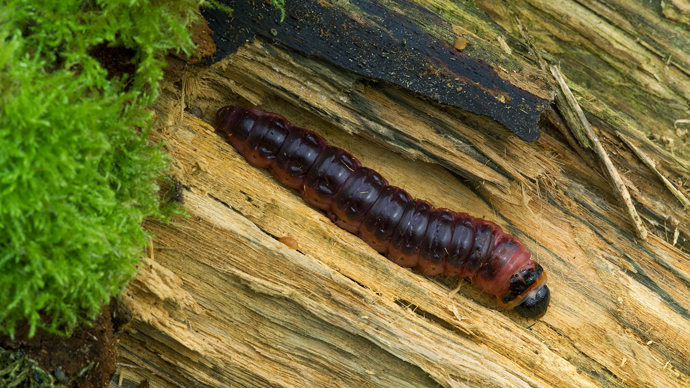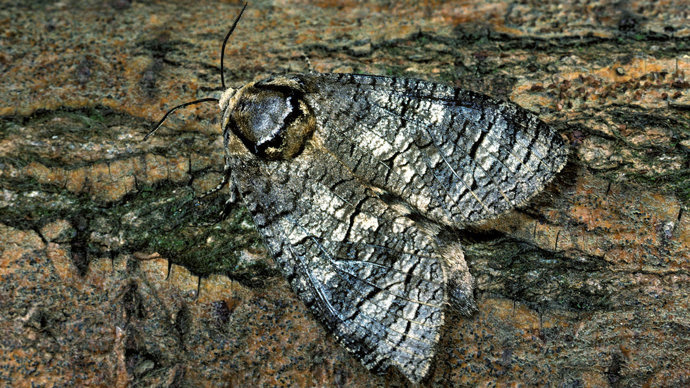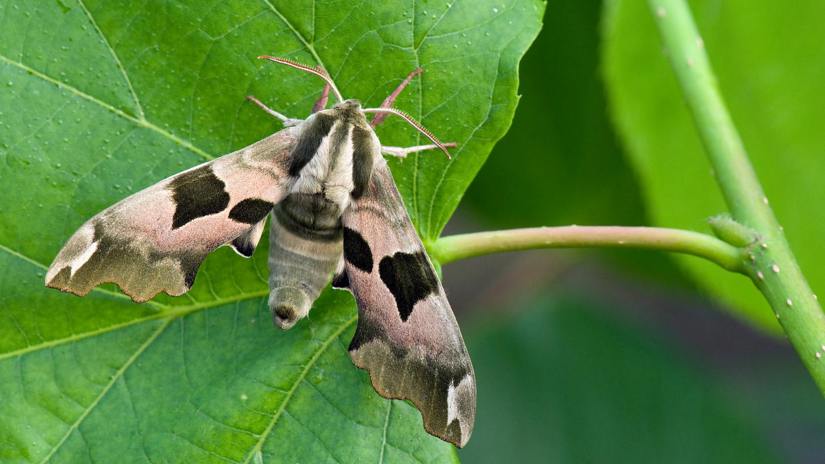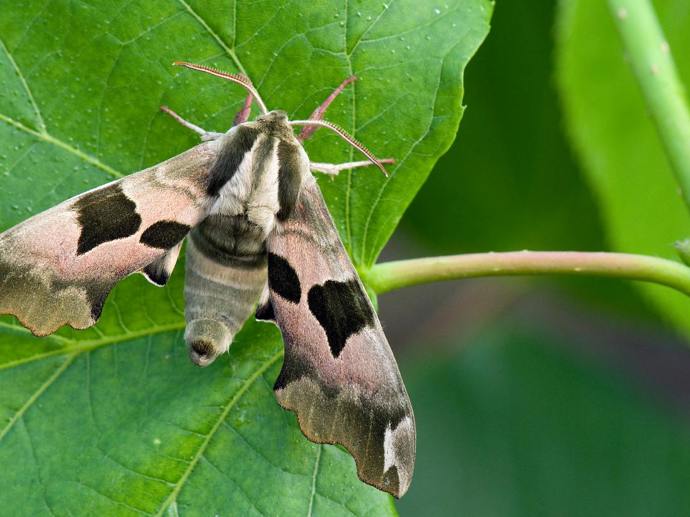Common name: goat moth
Scientific name: Cossus cossus
Family: Cossidae
Habitat: woodland, hedgerows, parks and gardens
Predators: birds, small mammals
Origin: native
Bulky yet well-disguised, this goliath is the heaviest moth in the UK! Spot the adults when they emerge in mid-summer after feeding on the wood of broadleaf trees as larvae.
Common name: goat moth
Scientific name: Cossus cossus
Family: Cossidae
Habitat: woodland, hedgerows, parks and gardens
Predators: birds, small mammals
Origin: native
Adults: the goat moth is a large moth. It has grey colouring with black and white markings which give it the appearance of cracked wood. It has a wingspan of up to 95mm.
Larvae: the larva is very large, growing up to 10cm long. It is dark red with lighter orangey sides and a black head.
Adults: these moths do not feed as adults.
Larvae: eat the wood of deciduous trees. The waste and sap they produce while eating leaks out of their nest hole and attracts many other insect species, including the red admiral butterfly.

Credit: Robert Thompson / naturepl.com
Larvae burrow holes into broadleaved trees like oak or ash. They spend up to five years growing until they are ready to pupate. In August or September, larvae leave their burrow homes to pupate on the ground, wrapping themselves in a soil cocoon. They overwinter as pupae and emerge as adults in the summer.
The goat moth gets its name from the musky ‘goat-like’ smell of the caterpillar.
The goat moth is a nationally scarce species, only found in scattered locations in England.

Credit: ARCO / naturepl.com
Larvae can be seen in August when they leave their nesting area. Adults are on the wing in June and July. Look for them in woodland near oak and ash, but you’ll need a keen eye to spot them!
A loss of habitat and suitable host trees is the main threat to the goat moth. They are a listed priority species on the UK Biodiversity Action Plan.


Amy Lewis • 21 Jun 2021
Hawk-moths are some of the largest and most recognisable moths in the UK. Learn to tell which is which with our visual guide to 10 of the most commonly encountered UK species.